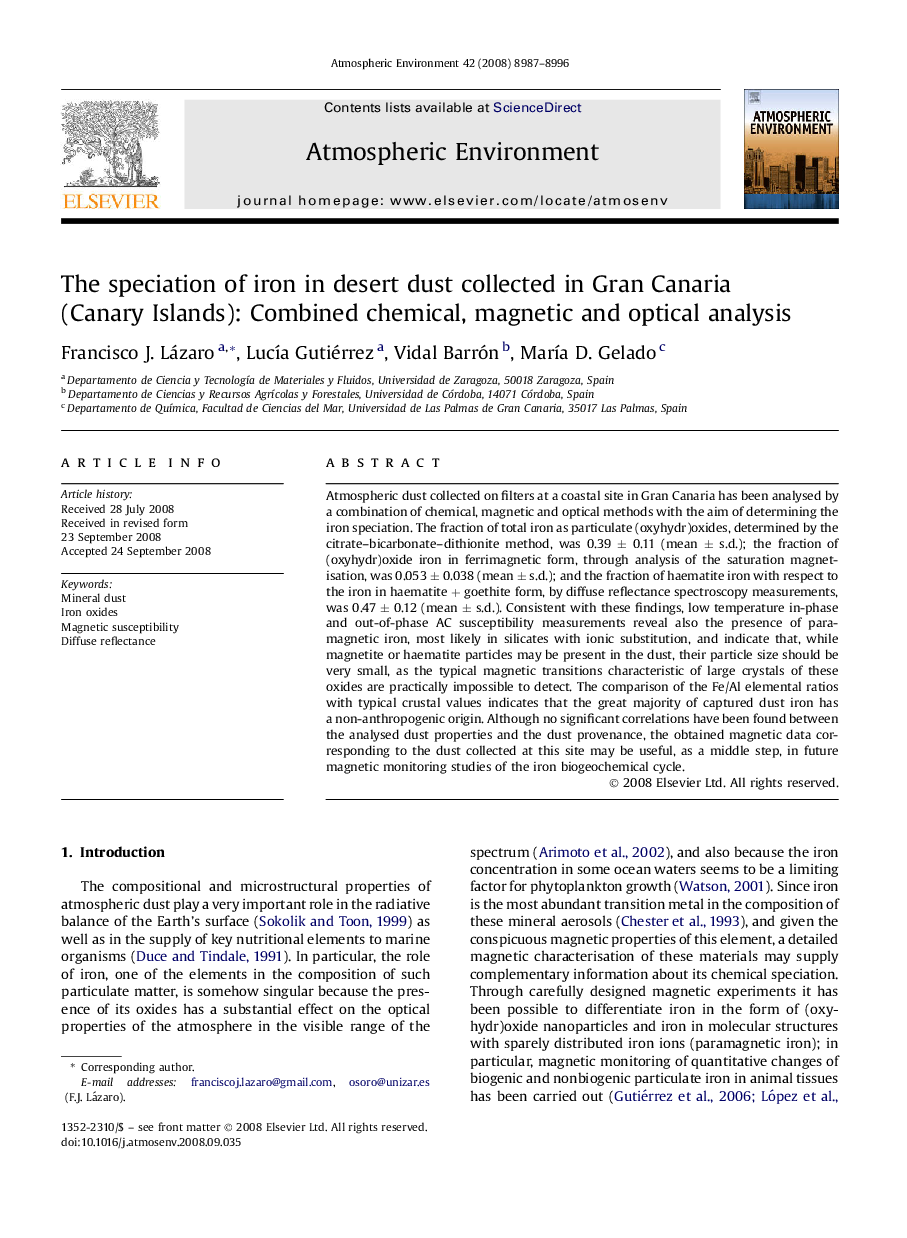| Article ID | Journal | Published Year | Pages | File Type |
|---|---|---|---|---|
| 4441371 | Atmospheric Environment | 2008 | 10 Pages |
Atmospheric dust collected on filters at a coastal site in Gran Canaria has been analysed by a combination of chemical, magnetic and optical methods with the aim of determining the iron speciation. The fraction of total iron as particulate (oxyhydr)oxides, determined by the citrate–bicarbonate–dithionite method, was 0.39 ± 0.11 (mean ± s.d.); the fraction of (oxyhydr)oxide iron in ferrimagnetic form, through analysis of the saturation magnetisation, was 0.053 ± 0.038 (mean ± s.d.); and the fraction of haematite iron with respect to the iron in haematite + goethite form, by diffuse reflectance spectroscopy measurements, was 0.47 ± 0.12 (mean ± s.d.). Consistent with these findings, low temperature in-phase and out-of-phase AC susceptibility measurements reveal also the presence of paramagnetic iron, most likely in silicates with ionic substitution, and indicate that, while magnetite or haematite particles may be present in the dust, their particle size should be very small, as the typical magnetic transitions characteristic of large crystals of these oxides are practically impossible to detect. The comparison of the Fe/Al elemental ratios with typical crustal values indicates that the great majority of captured dust iron has a non-anthropogenic origin. Although no significant correlations have been found between the analysed dust properties and the dust provenance, the obtained magnetic data corresponding to the dust collected at this site may be useful, as a middle step, in future magnetic monitoring studies of the iron biogeochemical cycle.
